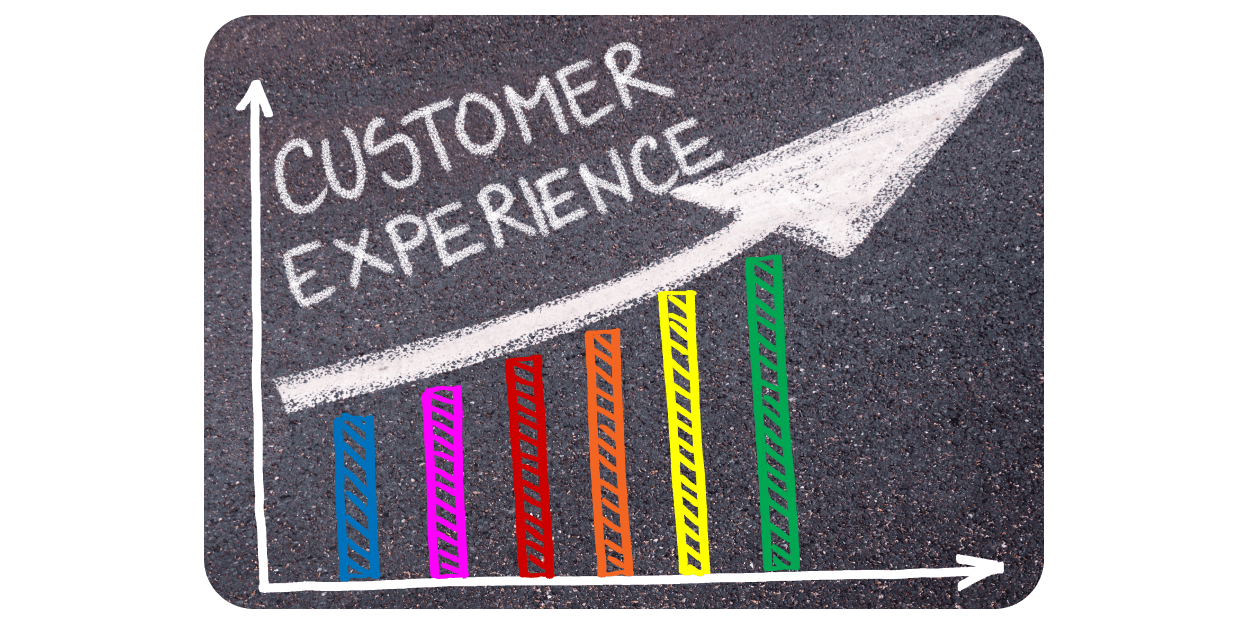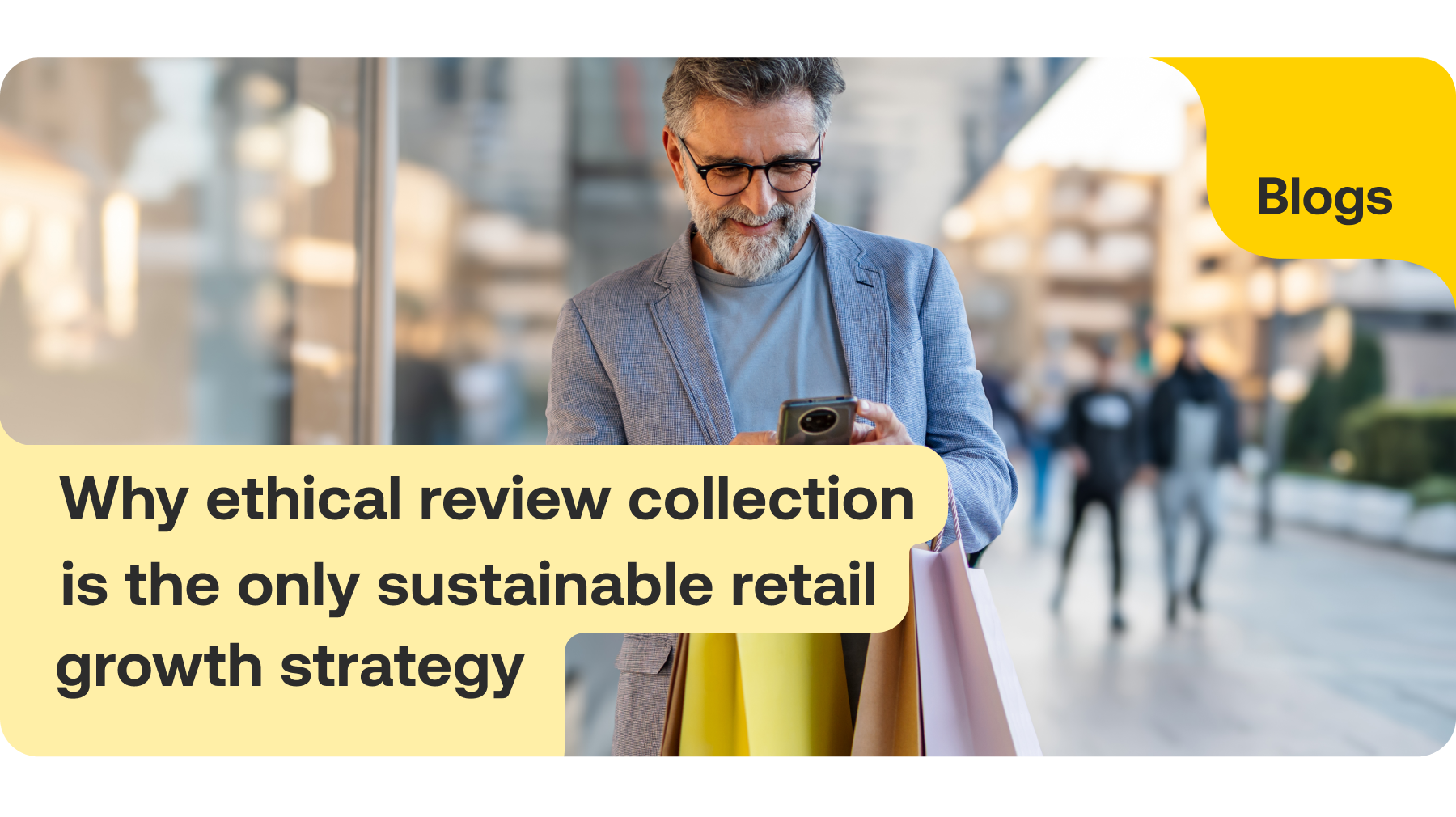As a business, you'll know how important it is that customers have a positive view of your brand.
One of the most reliable ways of boosting your brand's reputation is by creating a great customer experience (CX). In this in-depth guide, we'll explore precisely what customer experience is, why it's important — and how you can use it to your advantage.
What is customer experience?
Customer experience is how customers perceive your brand across every interaction they've had with you. It usually consists of multiple touchpoints, so to create a great customer experience, you need to consider every part of the customer's journey, from when they first visit your website to the delivery of the product or service.
What is digital customer experience?
Digital customer experience (DCX) refers to how your customers perceive your digital presence – but we're not just talking about how they feel about your website.
While customer experience encompasses the entire customer journey, including physical touchpoints and in-store experiences, digital customer experience focuses on the connections and experiences made in the digital space. It covers everything you control online, from your social media, mobile app, chatbots and everything in between.
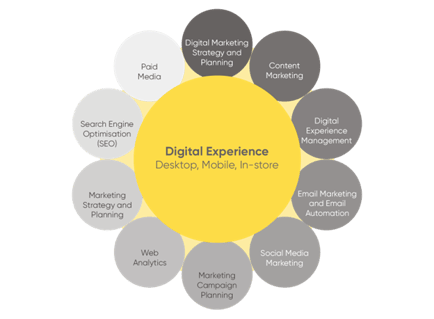
Why is customer experience important?
Word of Mouth is Powerful
94% of shoppers read reviews before buying a product or service, so make sure your brand leaves your customers walking away with a smile to protect your business.
Stand out from your competitors
In a world where every market is flooded with stiff competition, nailing your customer experience can be the difference between winning a new customer and losing them to a rival. 81% of organisations consider customer experience to be a competitive differentiator for them, with 92% experiencing increased customer loyalty, 84% seeing an uplift in revenue, and 79% reporting cost savings since making improvements.
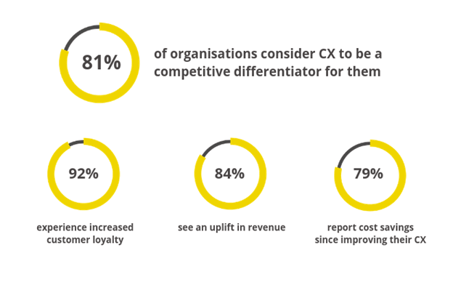
What's the difference between customer service and customer experience?
Both customer service and customer experience are essential, but there's a big difference between the two.
|
Customer Service |
Customer Experience |
|---|---|
|
|
That's not to say customer service isn't important, however. Your customer service team plays a huge role in your customer experience. They pick up the pieces when a delivery hasn't arrived, or an item is faulty. How they deal with these problems makes all the difference to customer loyalty.
- 91% of customers say they are more likely to make another purchase following a positive customer service experience
- 78% of customers will forgive a company for making a mistake after receiving excellent service
- 71% of customers have made purchase decisions based on the quality of customer service
Excellent customer service can take years to nail down, and you need a strong team that can be flexible with clear performance expectations.
What does a good customer experience look like?
While what works for your customer base depends on their values and interests, consumers will universally seek out some elements of customer experience.
Trust Signals
Trust signals create confidence in your brand, products or services. There are several types of trust signals, including:
- Customer reviews and testimonials
- Site security elements like SSL certificates
- Trusted payment methods like PayPal and Apple Pay
- Awards and certificates, such as Feefo's Trusted Service awards
Navigation
When it comes to websites, we need to find what we're looking for fast. In fact, 94% of consumers say that easy navigation is the most crucial website feature. Map out your customers' digital journeys and measure precisely where users drop off to pinpoint any weaknesses in your website navigation. A customer journey map brings this to life in a clear, visual way so you can understand where your site journey creates unnecessary friction — and generate more sales by improving these areas.
In-store Experience
While COVID-19 pushed many high-street brands online, there's still a place for brick-and-mortar stores in a post-pandemic world.
- Customers will still make 78% of purchases in stores by 2024
- 70% of people who shopped locally during the pandemic will continue to do so
- 42% of consumers shop in-store because they enjoy the experience
For a good in-store experience, you must offer your customers something unique. Understand what your customers want, need and expect when they visit your branches so you can offer a targeted experience rather than just a transaction.
How to understand your users' needs with customer profiles
Do you know who your customers are? Do you understand why they use your business? You may have a vague idea, but if you don't know your customers inside-out, meeting their needs and creating a customer experience tailored to them becomes challenging.
What are customer profiles?
Customer profiles, also known as buyer personas, help you understand who your ideal customers are and what you should do to retain and attract them.
Customer profiles typically contain information such as age, location, job title, hobbies/interests, how much they interact with your business, and the challenges each type of customer faces. You will probably have several personas, which can be very specific (i.e., you create a fictional person you're targeting) or more general (i.e., a job title with the challenges they're facing).
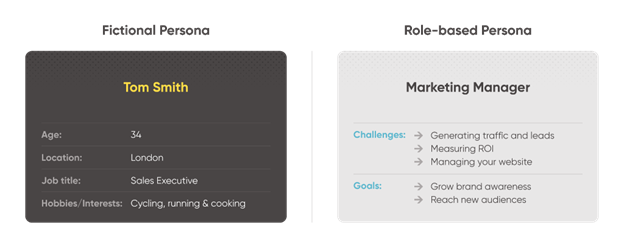
How to build customer profiles
You can use several tools to start building your customer profiles — but the first step is to speak to your existing customers. You can collect reviews from those who have already used your business to understand better who your existing customer base consists of and what they do and don't like about your business.
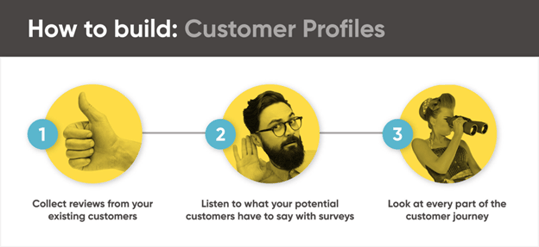
Collecting as much feedback as possible at multiple stages of the customer journey is vital. Tools like Feefo's Feedback Request Manager can help you collect and personalise feedback requests to specific customers at specific points in their journey. This will help you understand everything from whether your salespeople are selling the right solutions to how effectively your support team solves queries quickly.
How to measure customer experience
There's no 'one size fits all' when measuring customer experience. There are plenty of metrics and tools, but which is best for your business depends on what you do and the specifics of your customer journey.
Let's go through some of the most commonly used metrics.
| Measurement | Description | Pros | Cons |
|---|---|---|---|
|
Customer Satisfaction (CSAT) |
Ask users to rate their satisfaction levels out of 5 for each of your services |
Gives an in-depth rating for each service |
Takes a while to collect and use the data |
|
Net Promoter Score (NPS) |
A single rating between 1 and 10 of how likely a customer is to recommend your brand |
Really simple way of seeing company perception |
Isn’t granular enough to draw immediate conclusions |
|
Customer Effort Score (CES) |
Customers rank their experience on a seven-point scale which ranges from ‘very easy’ to ‘very difficult’. |
Pinpoints friction areas for your CX team to address |
Doesn’t give insights into how satisfied customers are |
|
Time to resolution (TTR) |
The average length of time it takes for your customer service team to solve an issue |
Address long response times head-on with clear data |
Can encourage taking shortcuts rather than fully solving customer problems |
An ideal approach is to use all four of these measurement systems to provide a holistic view of your brand's customer experience.
Feefo's Director of Marketing spoke with the FINITE Podcast to discuss the importance of collecting customer experience data and how that insight can be used to create better, more effective marketing strategies.
How to improve your customer experience
Improving your customer experience isn't a quick fix — it's an ongoing process which should evolve with your business. Here's what we suggest you do to get the ball rolling.
1. Map out your customer journey
Before getting any customer feedback, you need to get your head around the customer journey and identify all the relevant touchpoints. If you want to find out more about this, then read our complete guide on customer journey mapping.
2. Listen to your customer feedback
Listening to your customers' voices is critical to improving your customer experience. Whether you generate feedback from customer reviews, surveys or even your social channels, use what your customers say to identify key themes and figure out what your customers love and where you could make improvements.
3. Create a strategy
Once you know which touchpoints need work, you can set some objectives and start thinking about what you need to do to hit those goals.
At this stage, ensure you've included all departments, not just those dealing with customers on the frontline. Using feedback and insight from across the company means the whole business will be aligned, and the customer journey will feel cohesive.
4. Make small, measurable changes
Improving your customer experience should be a constant focus, and the process will naturally evolve with your business. As well as making small, meaningful improvements over time, you should regularly measure and report on the results to help guide your strategy moving forward.
5. Be consistent
Customers love it when a company goes above and beyond to deliver outstanding service, so it may be tempting to focus on creating 'wow' moments for your customers, but in reality, you can't deliver these every time.
Customers want consistency. By meeting the customers' expectations every time they come into contact with you, you'll build their confidence, making them more likely to remain loyal to your business and recommend you to others.
How to incorporate customer reviews into your customer experience strategy
Customer reviews are more than just an important element of your trust signals: they can be used to improve your customer experience now, so future reviews are drastically more positive.
Here's how you can use your reviews to your full advantage.
Launch a user-generated content (UGC) marketing campaign
Brands like Daniel Wellington and Pura Vida Bracelets have built a community following and social reputation by curating and sharing user-generated content (UGC) across their platforms, especially Instagram. Users are happy to share their positive feedback about the product for a chance to be featured on the brand's page. It's a win-win situation for you both, particularly when they're organic.
Customer reviews in the form of user-generated content can be anything from videos and images to podcast shout-outs and how-to tutorials. Start by creating an easy-to-use and memorable hashtag that you can use during various occasions like travel, eating out and family events. This will allow the content to remain relevant and timeless across different situations.
Create brand ambassadors
You can take UGC one step further by actively seeking like-minded individuals to collaborate with you. Brand ambassadors are customers who believe in your company's vision and who can effectively communicate this to others. When used efficiently, brand ambassadors can post customer reviews that influence new clients to get on board.
Use brand ambassadors to tap into a new audience base by partnering with someone with more than one target audience. For example, a fitness influencer may also have a pet dog for whom they can create animal-related content. As long as they are genuine customer reviews, they will tie in your brand stories.
Another way to get started with brand ambassadors is to create a loyalty programme with rewards. For every successful purchase, ask that customer to leave a review in order to get a discount on their next purchase or a gift. With some nurturing, these customer reviews will bring you repeat business, a growing fan base and organic referrals from their network.
Incorporate customer reviews across multiple platforms
It's crucial that new users can find reviews of your business wherever they're researching you.
Pay attention to top customer review sites for your industry. Most companies now have Google My Business pages where customers can see ratings, contact information, location and photos of a business all in one place.
With so many options, keeping track of and promptly responding to every review can be overwhelming. This is where Feefo's tools come in. You can easily add customisable page displays that group themes from customer reviews and help enhance the customer journey.
Level Up Your Customer Experience Strategy
Fully understanding your customers, their journeys, and what they want from your business sits at the heart of every great customer experience strategy.
Here at Feefo, we have the tools you need to discover more about your customers so you can start delivering an exceptional experience. To learn more about how we can help with your customer experience strategy, contact a member of our team today.
